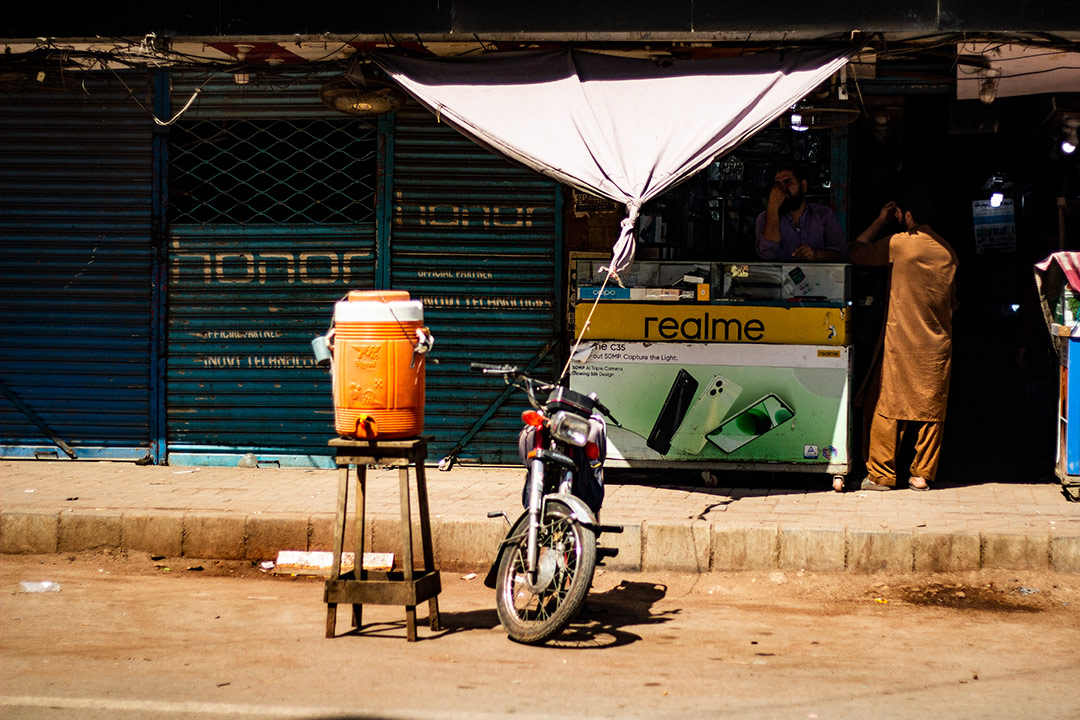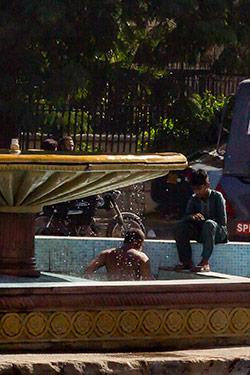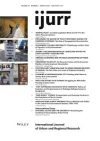Until recently, there has been limited in-depth and qualitatively rich research on extreme heat and its impacts on cities and vulnerable inhabitants. But the frequency of annual extreme temperatures, heatwaves, and related deaths across the world, is increasing and can no longer be ignored. The IPCC Working Group II Sixth Assessment Report on Impacts, Adaptation and Vulnerability has emphasized that if greenhouse gas emissions are not rapidly eliminated, increasing heat and humidity will create conditions that test human tolerance. This means greater exposure to dangerous thresholds of excessive heat, and the human body’s physiological capacity to regulate temperatures compromised by the rapid increases in heat gain.
South Asia is considered very high risk with hot seasons prolonging and changing monsoon rainfall patterns generating unmatched effects on living conditions, livelihoods, and food security. This is particularly evident in the frequency of lethal and prolonged heatwaves combined with rising humidity that have killed thousands of people in India and Pakistan. Even as people have lived with heat in South Asia for centuries, anthropogenic climate change is changing its nature. The emergent research on extreme heat in South Asia captures the complexities of rising heat and implications for vulnerable populations, especially those living in informal settlements where homes tend to be poorly ventilated, and where there is limited access to critical infrastructures such as water, electricity and shade crucial for cooling
This year (2023) soaring temperatures of 43.5 C have killed more than 200 people in the Indian states of Uttar Pradesh and Bihar, with morgues full and hospitals over capacity. In 2015, a deadly heatwave killed more than 1200 people in Pakistan’s largest city Karachi. Heat-related deaths are hard to pin down: when hospitals are overwhelmed during a heatwave, it is often impossible for medical staff to dedicate the time to clinically establish it, which gives authorities the excuse to easily downplay the numbers. Such deaths also signal the deadly nature of extreme heat on classed bodies.
At the city level, the risks are significant: in Pakistan in May 2022, the city of Jacobabad (population 191,000) in the southern region of Sindh, recorded six days when the wet-bulb globe temperature [1] (WBGT) exceeded the limit of human survivability: 35 C. Since human skin temperature averages close to 35 C (95°F), WBGTs above that critical value prevent people from dispelling internal heat, leading to fatal consequences within six hours, even for healthy people in well-ventilated conditions or in shade.
Scholars (such as Starosielski, 2019) have argued that the indeterminacy of the precise effects of temperature on the human body and the resulting harm, signals a form of thermal violence that is akin to torture and punishment. It is as Rob Nixon (2013) describes a form of slow violence that is ‘neither spectacular nor instantaneous,’ but often incremental and out of sight. More pertinently, thermal violence is enacted on those who are differentially positioned in terms of class, race, religion, ethnicity, and gender; thermal violence is, as Starosielski contends, a tool of disciplining racialized bodies. Climate change is devastating environments and altering especially the thermal contexts of already marginalized inhabitants. Is extreme heat turning South Asian cities into sweat boxes, especially in a context where legacies of planning failures, socio-spatial inequalities, and disconnected infrastructures are exacerbating thermal exposure by weaponizing the built environment as it heats up?
The essays in this Spotlight On collection speak to this question, with five essays written by established and emerging scholars who reflect on the impacts of rising heat in South Asia. Their essays address several critical issues pertaining to the unique challenges that rising temperatures pose for South Asia, and the harms imposed on poor, marginalized, and vulnerable inhabitants. These harms include direct and indirect impacts such as rise in old and new chronic disease burdens, worsening respiratory conditions, heat stress related injuries, displacement, and infrastructural damage.

A watercooler placed outside a thriving mobile market in Karachi’s dense old city area. Source: Karachi Urban Lab
Chandni Singh’s essay makes three succinct points; first, that even though the challenges of heat in South Asia are not new, the nature of heat is changing and becoming deadlier. Singh puts it succinctly: “the drumbeat of heat is already loud and getting louder.” Her second point underscores how heat intersects with differential vulnerabilities, and finally, that current responses for managing heat such as the heat action plans (HAPs), are insufficient. Singh’s essay sets the tone for this collection by drawing attention to the importance of differential vulnerabilities, and the mediating role of social structures in defining who is vulnerable. These points dovetail with the other authors’ key arguments, especially on the strategies that do not adequately engage with projected heat and can potentially replicate existing vulnerabilities.
Ashawari Chaudhri’s essay gives a historical framework to trace the relation between environmental heat and the body in India during three periods: the colonial period when hierarchies of the climate marked a difference between European/colonizer and native/colonized bodies; during the post independent period when “technologies of comfort” like air-conditioners as signifiers of modernity related comfort with classed bodies; and the present moment, through biopolitical and neoliberal measures such as heat action plans (HAPs) that signify a new regime of management of bodies and population. A key point that Chaudhri makes is that environmental heat must be understood as a socially embedded and historically contingent process that extends beyond the brief moments of heat waves, and that it has been disregarded for too long even though it has disproportionately affected the most vulnerable bodies, such as laborers working outdoors.
The next three essays provide empirically driven accounts of the impacts of extreme heat in Pakistan, India, and Nepal. Kandel and Shyangten’s essay tells us how extreme heat disasters, particularly in the Terai region of the southern plains of Nepal and the Kathmandu Valley, have been produced through urban planning failures, which have led to uneven urbanization, inadequate housing construction, insufficient water supply and hazardous air pollution. They also point out that Nepal is overlooked in the wider discussions on extreme heat impacts. The authors note this is largely because heat has been eclipsed by other seemingly more urgent disasters such as floods, landslides, and earthquakes. This is also due to the focus on Nepal’s mountainous regions and the overall neglect of the hot and humid southern plains of the Terai region.
Abdullah and Macktoom’s essay illustrates the failures of neoliberal governance in addressing the impacts of extreme heat in Karachi through the state’s tendency to delegate to NGOs and religious or philanthropic organizations. These organizations tend to treat heat management and response as a moral virtue. The process of delegation shifts the responsibility of managing heat onto individual gendered bodies. The authors reveal that the state’s general state of inaction is punctuated by periodic and misguided bouts of crisis-induced action. This unites with Chandni Singh’s point about the insufficiency of current state responses and the fragmented nature of heat adaptation strategies.

Finding ways to stay cool in Karachi. Source: Karachi Urban Lab
In the final essay by Aalok Khandekar, Anant Maringanti, Anushree Gupta, and Tanaya Bhowal, the authors examine the particular space of vulnerability in Hyderabad’s informal settlements to reveal its specific character, and the challenges people confront in their daily lives. A key point they make is about the importance of targeted, lower cost entitlements such as water, shade, income support, that can address the most acute heat challenges for inhabitants of informal settlements. These are the very entitlements that could mitigate the effects of thermal violence. The authors also highlight the gaps in state-led responses such as heat action plans, that fail to target the most vulnerable populations and rely on costly solutions such as cool roofs and cooling centers.
Rising heat and the impacts that intersect with differential vulnerabilities, generate a ‘thermal penalty’ on inhabitants in cities across South Asia. As the planet warms and cities overheat, thermal penalties will abound on classed, gendered, marginalized bodies that bear the brunt of the impacts. The essays in this special issue contribute to the need for in depth qualitative research by foregrounding the structural inequalities, differential vulnerabilities and urban planning failures that have contributed to the effects of extreme heat.
Nausheen H. Anwar is Professor of City and Regional Planning at Institute of Business Administration (IBA), Karachi, Pakistan and Director of the Karachi Urban Lab. She is also a Research Fellow at the Institute for Development Studies (IDS), and an editorial board member of IJURR.
All essays on Extreme Heat in Urban South Asia
Introduction: The Everyday Politics of Thermal Violence in Urban South Asia
Nausheen H. Anwar
Facing a Familiar Foe: Adapting to Heat in South Asia
Chandni Singh
The Paradox of Heat: Ubiquity, Invisibility, and Bodies in India
Ashawari Chaudhuri
Why focus on ‘heat’? A silent disaster unfolding in Nepal
Sajani Kandel and Sharmila Shyangtan
Heat (in)action: The Thermopolitics of Extreme Urban Heat in Karachi
Adam Abdullah and Soha Macktoom
Heat Relief as a Matter of Entitlement? The Socio-Materialities of Thermal Governance in an Informal Urban Settlement
Aalok Khandekar, Anant Maringanti, Anushree Gupta, and Tanaya Bhowal
Related IJURR articles on Extreme Heat and Climate Change in South Asia and Beyond
SOUTH ASIAN URBAN CLIMATES: Towards Pluralistic Narratives and Expanded Lexicons
Nida Rehman, Aparna Parikh, Zachary Lamb, Shruti Syal, D. Asher Ghertner, SiddhaRth Menon, Nausheen Anwar, Hira Nabi, Waqas Butt, Malini Ranganathan, Krithika Srinivasan, Harshavardhan Bhat, Anthony Powis and Nikhil Anand
ENDURING HARM: Unlikely Comparisons, Slow Violence and the Administration of Urban Injustice
Nikhil Anand, Bethany Wiggin, Lalitha Kamath and Pranjal Deekshit
URBAN WATERLINES: Socio-natural Productions of Indifference in an Indian City
Karen Coelho
TOWARDS A POSTCOLONIAL PERSPECTIVE ON CLIMATE URBANISM
Enora Robin and Vanesa Castán Broto
Day Zero and The Infrastructures of Climate Change: Water Governance, Inequality, and Infrastructural Politics in Cape Town’s Water
Nate Millington and Suraya Scheba
Resilient Growth: Fantasy Plans and Unplanned Developments in India’s Flood-Prone Coastal Cities
Liza Weinstein, Andrew Rumbach and Saumitra Sinha
Urban Waterscapes: The Hydro-Politics of Flooding in a Sinking City
Kian Goh
‘Eco’ For Whom? Envisioning Eco-urbanism in the Sino-Singapore Tianjin Eco-city, China
Federico Caprotti, Cecilia Springer and Nichola Harmer
Maintaining Climate Change Experiments: Urban Political Ecology and the Everyday Reconfiguration of Urban Infrastructure
Vanesa Castán Broto and Harriet Bulkeley
Strategic Bundling of Development Policies with Adaptation: An Examination of Delhi’s Climate Change Action Plan
Rimjhim M. Aggarwal
Urban Responses to Climate Change: Theories and Governance Practice in Cities of the Global South
Dirk Heinrichs, Kerstin Krellenberg and Michail Fragkias
Climate Change Adaptive Capacity in Santiago de Chile: Creating a Governance Regime for Sustainability Planning
Jonathan R. Barton
